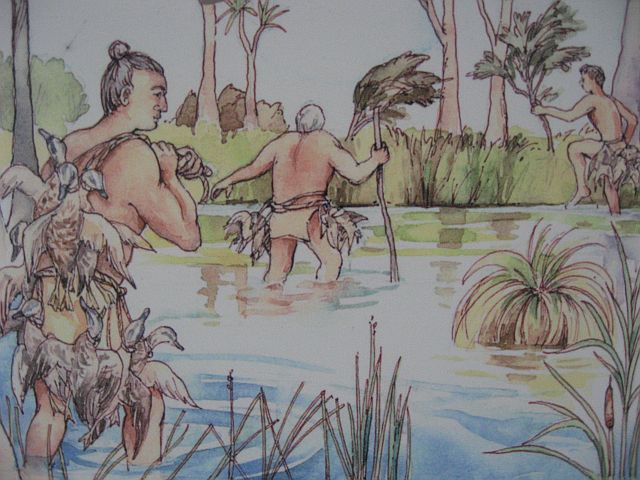You can contact LEARNZ, part of CORE Education, at:
Postal Address:
PO Box 13 678,
Christchurch 8141,
New Zealand
Water is a taonga of huge importance to iwi. Water is linked to identity, used for transport, gathering food and other materials.
 Māori recognise many different types of water/momowai and each has different values and uses. Each body of water also has a life force/mauri and should not be mixed with water from another source. For Māori, water is the essence of all life, like the blood of Papatūānuku (Earth mother) who supports all people, plants and wildlife.
Māori recognise many different types of water/momowai and each has different values and uses. Each body of water also has a life force/mauri and should not be mixed with water from another source. For Māori, water is the essence of all life, like the blood of Papatūānuku (Earth mother) who supports all people, plants and wildlife.
Māori identity is linked to rivers.
Enhancing the health and wellbeing of our waterways is a priority for many Iwi. Māori often consider their personal health and the health of the iwi to be linked to the health of their water bodies.
Māori identity is linked to rivers. Māori are connected to water and to the whole natural world through whakapapa – a lineage that descends from Ranginui and Papatūānuku down to people and all parts of the environment. Rivers are thought of as tīpuna (ancestors) that have been with us throughout history.
Ko te wai te ora ngā mea katoa - Water is the life giver of all things.

Māori used rivers for:
Early Māori relied on rivers. Rivers were used as landing sites, settlements and a source of fresh water. Māori explored as far as possible upriver on many waterways.
It was easier to get from place to place by canoeing up or down rivers than by walking over the mountains or through dense bush. Waka made of hollowed-out logs were used to travel along or across rivers. On the many fast flowing rivers of the South Island, mōkihi (rafts of woven reeds) were used.
Māori often built settlements at the mouth of a river. Food was gathered from the river itself or its estuary.
Food sources found inland or at sea could be reached easily by river. Māori recognised the link between rivers and the sea and the need to look after rivers from their source in the mountains right through to the sea.

Pounamu is found only on the South Island’s West Coast. Produced deep in the earth, it is brought to the surface by mountain uplift, and then cleaned by river action. Māori used pounamu to make tools, weapons and ornaments.

Ready for a quiz? Try The Importance of Rivers to Māori interactive activity.
Pounamu is a taonga and it was a valuable item of trade. Groups made expeditions to the West Coast, where they cut pounamu from boulders and carried it back over paths known as greenstone trails.
Often in Māori tradition taniwha (monsters) lived in rivers. They could be guardians of a place, or upholders of customs and tribal mana.